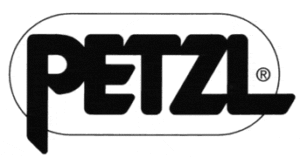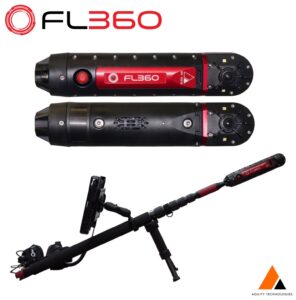Commonly Asked Questions
Questions About The Gemtor Harness:
How many models of Gemtor Class II Harnesses are there?
- Model #541NYC – The original harness with an adjustable front and back waist strap and back-side leg adjustments. Choose right or left closure. Includes Pompier Hook on an A-frame.
- Model #546NYC – Similar to the 541NYC harness, except for one waist adjustment on the back waist strap and front-side leg adjustments. Choose right or left closure. Includes Pompier Hook on an A-frame.
- Model #543NYC – A conversaion harness that can be worn as a Class II, but quickly convert to a Class III with a top attachment. One waist adjustment on the back waist strap. Choose right or left closure. Includes Pompier Hook on an A-frame.
- Model #541C – A center closing harness with one waist adjustment on the back waist strap and front-side leg adjustments. Choose right or left closure. Includes Pompier Hook on an A-frame.
How are Gemtor Harnesses sized?
There are three sizes of harness, which are identified by a number within the model number. The size breakdown is as follows:
- Size “0” is SMALL for waist size 30″ – 44″.
- Size “2” is STANDARD for waist size 36″ – 50″.
- Size “4” is EXTRA LARGE for waist size 44″ – 56″.
What is the life expectancy of the Gemtor Harness?
The manufacturer recognizes no specific life expectancy. However, the harness should be inspected before each use. If the harness or its components show any signs of excessive wear or deterioration, it should be removed from service and destroyed.
- In NFPA 1858, Chapter 10, 10.1.2, it reads “Software products shall be retired in accordance with 10.2.1 no more than 10 years from the date of manufacturer”.
- Many of the fiber manufacturer recommends a 5 year service life. This is based on UV exposure and exposure to harsh environments.
Are there any fire service standards that define how long these harnesses should be in service?
No. There is a “voluntary” ANSI standard, which states that the life expectancy of a harness shall be 5 years from the date of first use and 6 years from date of manufacture. ANSI does have standards for the industrial workplace / workers.
How can I inspect my Gemtor Harness?
A visual inspection is required before each use. You are checking for mildew, wear, damage and any deterioration. Buckles, D-rings, snap hooks and thimbles shall not be distorted or have any sharp edges, burs, cracks, worn parts or corrosion. All webbing shall be free of frayed or broken fibers, pulled stitches, tears, abrasions, mold, burns or discoloration. Defective components shall be removed from service.
What is the strength of the Gemtor harness and harness webbing?
Drop tests performed by the New York City Fire Department have recorded strengths of the Gemtor 541 harness at over 11,000 lbs. The Gemtor 541 Class II Harness is rated for a 600 lbs load. The strength of the nylon webbing is 9,800 lbs.
What is the construction and strength of the Gemtor 5742 Pompier Hook?
The ProSeries XL Pompier Hook is made exclusively for Gemtor. It is constructed of high strength Aluminum and is rated at 9,000 lbs MBS (40kN), has a General Use rating and meets NFPA 1983.
What is the benefit to having loops sewn into my bunker pants?
Loops keep the Gemtor harness in place when bunker pants are not being used. They hold and maintain the harness in place so when the user puts the bunker pants on, everything is in place for quick deployment, as well as proper placement of the harness on the user.
Is there training available for the Gemtor Harness?
All Hands Fire offers a training class for the Gemtor Harness. This program covers the harness, proper fit and wear, and various uses including: firefighter rescue as a rescuer, firefighter rescue as a victim, drags, movements, descending, lowering loads and more.
NFPA 1858-2018: Standards on Selection, Care, and Maintenance of Life Safety Rope and Equipment for Emergency Services
6.2.5.3 Life safety harnesses, ladder belts, and escape belts shall be repaired or retired from service if inspection reveals damage resulting in a performance deficiency due to the following: (1) Soiling; (2) Contamination; (3) Physical damage to the webbing components, including but not limited to the following: (a) Cuts, worn or frayed areas, broken fibers, or soft or hard spots, (b) Thermal or chemical damage such as melted fibers, glazed surfaces, or discoloration, (c) Pulled threads, abrasions, or breaks in the stitching; (4) Physical damage to the hardware components, including but not limited to the following:
(a) Damage, sharp edges, or missing components, (b) Failure to operate properly; (5) Excessive age
Questions Above Firefighter Escape Systems:
How often should my department do escape system refresher training?
Enough to maintain proficiency. Department’s should plan on a cycle of refresher training that keeps its members proficient in the proper bailout techniques, as well as the equipment’s use, function and operation. Some department’s hold refresher training once a year and some do more.
Is the Petzl EXO Firefighter Escape System the same exact system as is used by the FDNY?
No. The only component within the Petzl EXO Personal Escape System that is used by the FDNY is the EXO descender.
I have watched your videos on the “AllHandsFire” YouTube channel and have seen photographs of your Firefighter Escape Systems training. I notice that you instruct your students to “walk” down the wall versus descending vertically with their toes either facing downward or against the wall. Can you explain what the difference is?
Both methods – walking down the wall and a vertical descent – are acceptable methods. There are PRO’s and CON’s to each. Most manufacturer-approved programs teach that the “walking down” method, as our staff of over 30 instructors feel that it is the safest method. We have taught and seen this method proven through the more than 20,000 bailout slides that we have supervised.
Descending vertically (toes against the wall)
– May introduce slack in the line IF the user comes to a ledge or similar building fixture and offsets their weight. Introducing slack could allow the anchor to come loose and/or detach its hold
– May cause less “stress” on the anchor
Setting Feet and Walking Down Wall
– Allows user to gain composure to reduce uncontrolled and possible free-fall
– Allows user to “walk down” wall, see where they are going and maneuver around obstructions, such as an AC units
Can I purchase an escape system and use it at the End User training class?
According to NFPA A.5.1.2.1, escape rope is intended only for emergency self-rescue situations and cannot be used for other rope rescue situations. Escape rope is designed for one use only and destroyed after any use. Some customers or fire departments, due to budgetary constraints and financial restrictions, choose to use their escape systems for the training course and once complete, place their escape system in service. All Hands Fire Equipment and our cooperative trainers assume no responsibility in these instances. It is the manufacturer’s recommendation that Fire Departments purchase extra escape systems and use them for training purposes only. If a Fire Department chooses not to follow this recommendation, they will need to create an appropriate program to control the use of field units for training. Note that all Fire Departments who purchase escape systems are ultimately responsible for proper inspection, care and maintenance of these units and they need to take this responsibility very seriously. All Hands Fire Equipment and the manufacturer are not responsible for damages that occur on “in service” units used for training. Damages to “training” units are handled by the manufacturer on a case by case basis. With regards to life expectancy of training ropes: For reference information, the FireTech 32 rope used by FDNY on their training units becomes glazed and stiff and it needs to be changes every 200 to 300 descents under normal training use. The EXO training units themselves need to be retired after 400 to 600 descents under normal training use.
All Fire Departments need to understand that escape systems may need to be retire on the first descent if the rope, descender unit or other components get damaged on the windowsill. Proper inspection, maintenance and care is the key to a safe and successful bailout program and Fire Departments are responsible for this.









